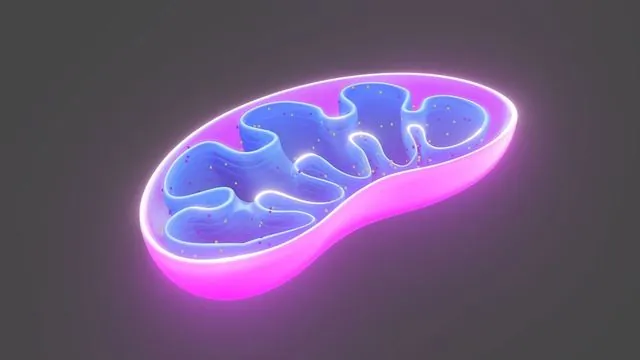
New Research Unveils Mitochondria's Secrets: The Key to Understanding Cellular Functions!
2025-07-07
Author: Li
Unlocking the Mysteries of Mitochondria
A groundbreaking study from UT Southwestern Medical Center is shedding light on the enigmatic functions of mitochondria—the cell's powerhouses. By employing a cutting-edge genetic method that compels cells to eliminate their mitochondria, researchers are revealing critical insights that could pave the way for novel treatments for debilitating mitochondrial diseases like Leigh syndrome and Kearns-Sayre syndrome.
What Are Mitochondria and Why Do They Matter?
Mitochondria are essential organelles found in nearly all eukaryotic cells, including those of animals, plants, and fungi. Unique for having their own genetic material—transmitted solely through maternal lineage—these organelles are believed to have evolved from ancient prokaryotic cells that formed a symbiotic relationship with ancestral eukaryotes.
These tiny structures are not just energy producers; they also play pivotal roles in cell death regulation, stem cell differentiation, signaling, aging, and developmental processes. But the intricate dynamics between mitochondria and nuclear DNA have remained largely a mystery.
Revolutionary Method: Enforced Mitophagy!
The research team, led by Dr. Jun Wu and former student Dr. Daniel Schmitz, leveraged a natural cell process called mitophagy to induce what they term "enforced mitophagy." This technique compels cells to completely sever ties with their mitochondria, enabling the researchers to explore the consequences of this separation.
They specifically targeted human pluripotent stem cells—young cells with the potential to develop into various cell types—and discovered that, while the cells ceased dividing, they could surprisingly thrive for up to five days without mitochondria. Further tests with diverse mouse stem cells and those harboring mutated mitochondrial DNA confirmed the technique's versatility across species.
The Gene Expression Revelation!
To delve deeper, the researchers analyzed how the depletion of mitochondria affected gene activity. Astonishingly, they found 788 genes became less active while 1,696 increased in activity. Remarkably, the cells demonstrated an ability to adapt, with nuclear-encoded proteins stepping in to handle energy production and functions typically managed by mitochondria.
A Genetic Dance with Our Primate Relatives!
To further investigate the mitochondrial-nuclear crosstalk, researchers created hybrid cells by fusing human stem cells with those from our closest primate relatives. This fusion allowed for a unique opportunity to selectively discard non-human mitochondria, unveiling that these organelles, despite millions of years of evolution, are largely interchangeable.
What's more intriguing is that gene expression differences often revolved around brain development and neurological functions, hinting at a potential role for mitochondria in the evolutionary distinctions between humans and other primates.
Impact on Organ Development!
The researchers also explored the implications of mitochondrial depletion at the organism level. By applying enforced mitophagy to mouse embryos, they observed that those with over 65% of their mitochondria removed failed to implant in the womb. However, embryos with a reduction of about one-third of mitochondria showed delayed development but ultimately caught up by the 12.5-day mark after fertilization.
A New Era of Mitochondrial Research!
Together, these findings mark a significant leap in our understanding of the multifaceted roles that mitochondria play in cellular behavior, development, aging, and even species evolution. The researchers plan to continue exploring this fascinating field using enforced mitophagy, promising an exciting future filled with new discoveries.


 Brasil (PT)
Brasil (PT)
 Canada (EN)
Canada (EN)
 Chile (ES)
Chile (ES)
 Česko (CS)
Česko (CS)
 대한민국 (KO)
대한민국 (KO)
 España (ES)
España (ES)
 France (FR)
France (FR)
 Hong Kong (EN)
Hong Kong (EN)
 Italia (IT)
Italia (IT)
 日本 (JA)
日本 (JA)
 Magyarország (HU)
Magyarország (HU)
 Norge (NO)
Norge (NO)
 Polska (PL)
Polska (PL)
 Schweiz (DE)
Schweiz (DE)
 Singapore (EN)
Singapore (EN)
 Sverige (SV)
Sverige (SV)
 Suomi (FI)
Suomi (FI)
 Türkiye (TR)
Türkiye (TR)
 الإمارات العربية المتحدة (AR)
الإمارات العربية المتحدة (AR)